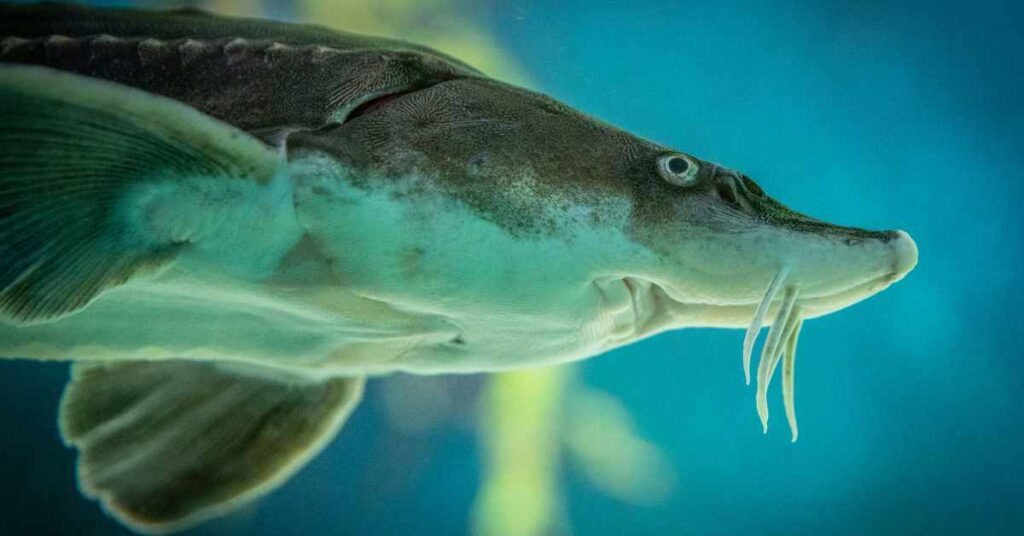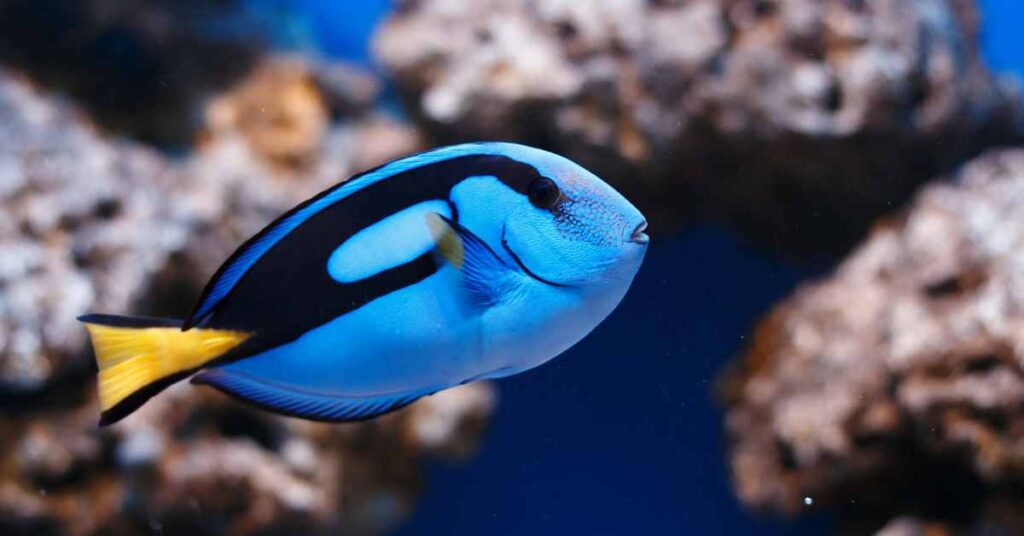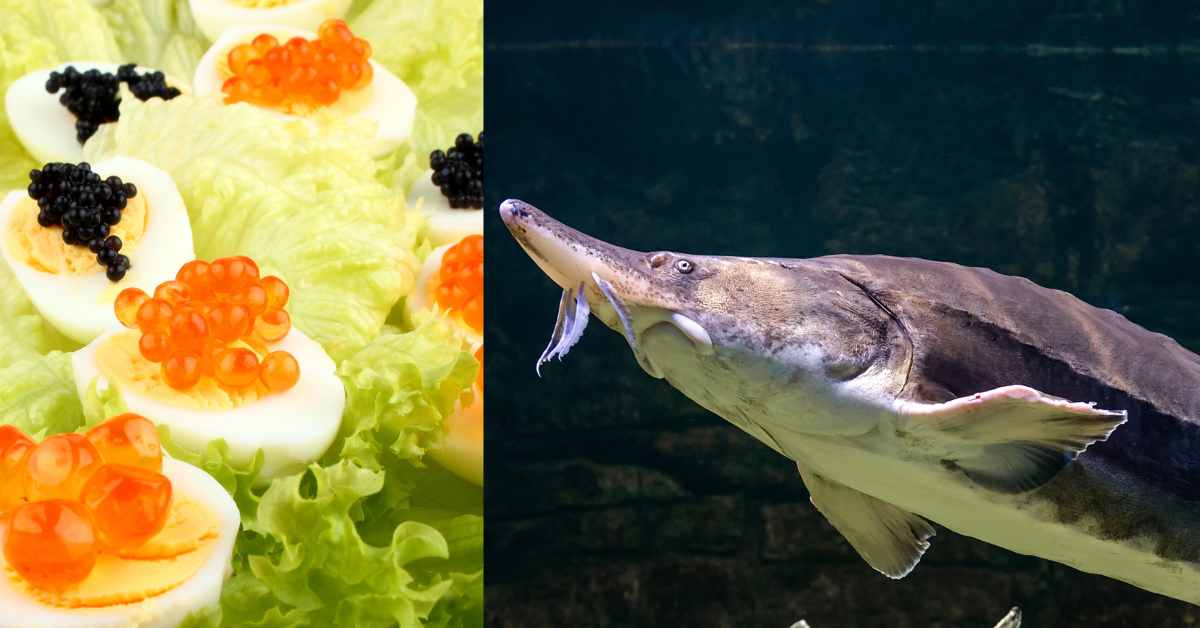Introduction to Roe Fish
Roe fish, a term used to describe fish whose eggs, or roe, are harvested for culinary use, play an essential role in both aquatic ecosystems and human consumption. The term “roe” generally refers to the fully ripe internal egg masses in fish and other marine animals like sea urchins and shellfish. Roe is considered a delicacy in many cultures, often eaten raw or cooked in various forms, such as sushi, caviar, or in traditional dishes worldwide. Beyond its culinary value, roe fish and their eggs hold significant environmental and ecological importance.
This article delves into the environmental niche of roe fish, focusing on their role in marine ecosystems, sustainable fishing practices, and the importance of conserving these species for the future health of our oceans.
What is Roe Fish?
Definition of Roe and Its Types
Roe refers to the eggs of fish and other marine animals. Depending on the species, roe can come in various forms and sizes. Some of the most well-known types of roe include:
- Caviar: The roe of sturgeon fish, particularly Beluga sturgeon, is one of the most expensive and highly sought-after varieties.
- Ikura: The roe of salmon, typically large and orange in color, is a staple in Japanese cuisine.
- Tobiko: Flying fish roe, known for its tiny, crunchy texture and bright orange or green hue.
- Uni: The roe of sea urchins, prized for its creamy texture and rich, umami flavor.
The harvesting and consumption of roe are linked to specific fish species that are considered roe fish. These species are not only important for human food but also play critical roles in their ecosystems.
Ecological Importance of Roe Fish

Role in Marine Food Webs
Roe fish are a critical component of marine ecosystems, playing a crucial role in food webs. Fish eggs and larvae serve as food for various marine species, including larger fish, marine birds, and even some mammals. The high nutrient content of roe makes it an essential energy source for these predators, contributing to the health and balance of oceanic food chains.
Supporting Biodiversity
The presence of roe fish in marine environments is vital for maintaining biodiversity. Many fish species reproduce in large numbers, with the majority of their eggs never reaching maturity. While this might seem like an inefficiency, it is an essential part of the natural process. The eggs and larvae that do not survive provide sustenance for other species, supporting a diverse array of marine life.
For example, herring roe is a crucial food source for species like seabirds, marine mammals, and other fish. This natural feeding cycle helps sustain healthy populations of predators, which in turn maintains the ecological balance of the oceans.
Threats to Roe Fish and Their Ecosystems
Overfishing and Habitat Destruction
One of the greatest threats to roe fish populations is overfishing. Many fish species, such as sturgeon and salmon, are harvested not only for their flesh but also for their valuable roe. This has led to significant population declines in some species, particularly those that are slow to mature and reproduce, like sturgeon.
Overfishing disrupts marine ecosystems by removing key species that play essential roles in maintaining balance. For instance, the depletion of sturgeon populations in some regions has affected not only the species itself but also the ecosystems they inhabit. The removal of large, mature fish reduces the availability of roe for predators and can lead to long-term ecological consequences.
Habitat destruction also poses a significant threat to roe fish. Many species rely on specific spawning grounds, such as riverbeds or coastal areas, to reproduce. The destruction of these habitats due to pollution, construction, or climate change can severely impact fish populations, reducing their ability to reproduce and sustain future generations.
Climate Change Impacts
Climate change is another significant factor affecting roe fish and their habitats. Rising sea temperatures, ocean acidification, and changes in salinity can all disrupt the delicate balance of marine ecosystems, affecting both the availability of roe and the ability of fish to reproduce successfully.
For example, salmon, a well-known roe fish species, are highly sensitive to changes in water temperature. As rivers and oceans warm, salmon are forced to migrate to cooler waters, which may be less suitable for spawning. This disrupts their natural reproductive cycles, leading to lower roe production and negatively impacting the species that rely on salmon roe as a food source.
Sustainable Fishing Practices for Roe Fish
Sustainable Harvesting of Roe
To protect roe fish populations and ensure the long-term availability of this important resource, sustainable fishing practices must be employed. Sustainable harvesting involves carefully managing fish populations to prevent overfishing and ensure that enough fish are left to reproduce and sustain future generations.
One approach to sustainable roe harvesting is setting quotas, which limit the amount of roe that can be harvested each year. These quotas are based on scientific assessments of fish populations and are designed to prevent overfishing. In addition, some fisheries have implemented seasonal restrictions, allowing roe fish to spawn and reproduce before they are harvested.
Aquaculture and Roe Production
Aquaculture, or fish farming, is another method of producing roe sustainably. By raising fish in controlled environments, aquaculture can reduce the pressure on wild fish populations and provide a steady supply of roe for human consumption.
Sturgeon farming, for example, has become a popular method for producing caviar without depleting wild sturgeon populations. In these farms, sturgeon are raised in tanks or ponds, and their roe is harvested without harming the fish. This allows the fish to continue producing roe throughout their lifetime, providing a renewable source of caviar.
While aquaculture can offer a more sustainable solution for roe production, it is not without its challenges. Fish farming can have negative environmental impacts, such as water pollution, disease transmission, and habitat destruction if not managed properly. Therefore, it is crucial for aquaculture operations to follow best practices to minimize their ecological footprint.
The Importance of Roe Fish Conservation

Protecting Endangered Species
Several species of roe fish, particularly those that produce highly prized roe like sturgeon, are classified as endangered or vulnerable due to overfishing and habitat loss. Conservation efforts are essential to protect these species from extinction and preserve their ecological roles in marine ecosystems.
Organizations such as the International Union for Conservation of Nature (IUCN) have implemented measures to protect endangered roe fish species. These efforts include establishing marine protected areas, enforcing fishing quotas, and promoting sustainable fishing practices.
Public Awareness and Consumer Choices
Raising public awareness about the environmental impact of consuming roe fish is another critical aspect of conservation. Consumers can play a significant role in protecting roe fish populations by making informed choices about the seafood they purchase.
Choosing sustainably sourced roe, such as caviar from aquaculture farms or roe from well-managed fisheries, can help reduce the demand for roe from overfished populations. Certifications such as the Marine Stewardship Council (MSC) label indicate that a product comes from a sustainable source, allowing consumers to support environmentally friendly fishing practices.
The Culinary and Cultural Significance of Roe Fish
Roe in Global Cuisine
Roe fish and their eggs have been a part of human diets for centuries, with roe being used in a variety of traditional dishes around the world. The cultural significance of roe is particularly strong in regions where fish is a dietary staple.
- Japan: In Japan, roe plays a central role in dishes like sushi and sashimi. Ikura (salmon roe) and tobiko (flying fish roe) are commonly used in sushi rolls, providing a burst of flavor and texture.
- Russia and Eastern Europe: Caviar, the roe of sturgeon, is a delicacy that has been enjoyed by royalty and the wealthy for centuries. It is often served as a luxurious appetizer, typically paired with blinis, crackers, or toast.
- Scandinavia: Roe, particularly from fish like herring and cod, is a staple in Scandinavian cuisine. It is used in spreads, salads, and even as a garnish for traditional dishes.
- Southeast Asia: In countries like Thailand and Vietnam, roe from various fish species is used in soups, salads, and stir-fries. Fish roe is often considered a delicacy and is incorporated into festive meals.
Nutritional Value of Roe
In addition to its cultural significance, roe is highly nutritious. Fish roe is rich in omega-3 fatty acids, which are essential for heart and brain health. It is also an excellent source of protein, vitamins, and minerals such as vitamin D, calcium, and phosphorus.
The nutritional benefits of roe make it an important food source in many parts of the world, particularly in regions where access to other protein sources may be limited. By promoting the consumption of sustainably sourced roe, communities can support both environmental conservation and human health.
Conclusion: The Future of Roe Fish in a Sustainable World
Roe fish, with their ecological, economic, and cultural significance, are a vital component of both marine ecosystems and human diets. However, the future of these species is uncertain, as they face threats from overfishing, habitat destruction, and climate change. To ensure the survival of roe fish and the sustainability of their populations, it is essential to adopt responsible fishing practices, promote aquaculture, and raise awareness about the importance of conservation.
As consumers, we can also play a role by choosing sustainably sourced roe and supporting initiatives that protect endangered species and their habitats. By working together, we can ensure that roe fish continue to thrive in our oceans, supporting both biodiversity and the communities that depend on them.
Read More: Are Pink Dolphins a Real Thing? An In-Depth Look at the Mysterious Mammals

